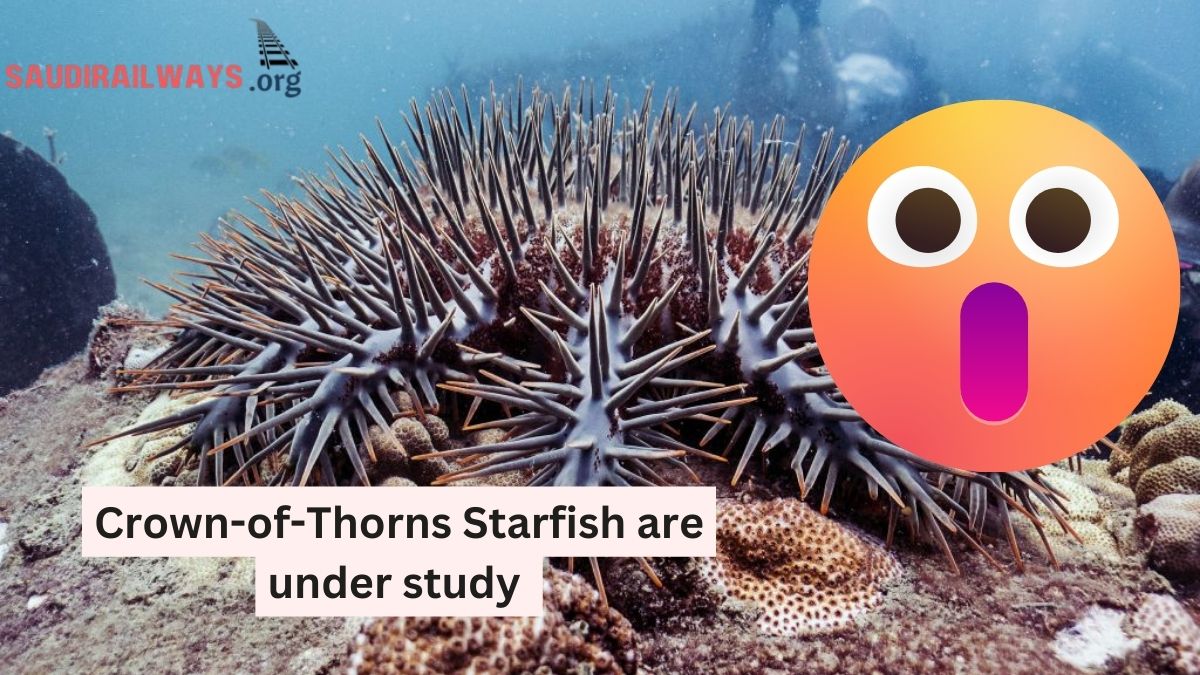The Red Sea, a vital marine ecosystem, faces a growing threat from the crown-of-thorns starfish (COTS), a species known for its detrimental effects on coral reefs.
To address this, Saudi Arabia’s National Center for Wildlife Development (NCWD) has initiated a study to understand and mitigate the impact of these starfish outbreaks.
Contents
What’s Happening?
The Red Sea has a big problem with a starfish called the crown-of-thorns, which eats a lot of coral. Coral is very important because it helps many fish and sea animals live and grow. Saudi Arabia’s wildlife group is studying these starfish to find out how to stop them from hurting the coral too much.
Click here to know more
About the Crown-of-Thorns Starfish
What Do They Eat?
This starfish likes to eat the food on coral reefs. This might sound okay, but if there are too many starfish, they can eat so much that they hurt the coral. This is bad because coral reefs are like cities under the sea where lots of fish live.
Why Are They a Problem?
Every year, during the summer, these starfish have lots of babies, and they can quickly become too many. When there are too many of them, they can destroy the coral. This makes it hard for the fish and other sea animals to find homes and food.
The Threat to Coral Reefs
During their breeding season, typically from the last two weeks of July to the first two weeks of August, the population of the crown-of-thorns starfish can increase dramatically. This surge often results in extensive damage to the coral reefs in the Red Sea, which are crucial for biodiversity and marine life sustainability.
What Saudi Arabia Is Doing
The wildlife group in Saudi Arabia learned about this problem and started a big project to watch these starfish and figure out the best way to keep the coral safe. They talk to experts from all over the world to get the best ideas.
In response to the escalating threat, the NCWD, following a pivotal workshop in late 2022, has launched a survey to track and analyze the patterns of these starfish outbreaks. This initiative is part of a broader action plan aimed at preserving the health and resilience of the Red Sea’s coral reefs.
The study involves collaboration with global marine experts and aims to develop effective protocols for detecting and managing COTS outbreaks. The goal is to identify the best strategies to mitigate damage and ensure the recovery of affected coral areas.
They are trying to find the best way to know when and where the starfish are becoming too many so they can do something about it before it’s too late. They want to make sure the coral reefs stay healthy.
How a Big Fish Helps
There is a big fish called the humphead wrasse that eats these starfish. By eating the starfish, this fish helps keep their numbers down. This is good because it means less damage to the coral.
To help the coral, people are also trying to protect this big fish. They stopped sending it to other places and started putting some back into the sea where they belong. This helps because then there are enough of these fish to eat the starfish and protect the coral.
The Role of the Humphead Wrasse
One significant natural solution involves the humphead wrasse (Cheilinus undulatus), known locally as tarpani. This species plays a crucial role in controlling the crown-of-thorns starfish population, as they are one of the few predators of the COTS. Preserving and increasing the population of humphead wrasse is vital for maintaining ecological balance.
Recognizing the importance of the humphead wrasse, initiatives such as those by the World Wildlife Fund (WWF) have been pivotal. Efforts in Malaysia to halt the export of this species and to repopulate protected areas through buyback programs with local fishermen have shown promise. Since 2010, over 860 humphead wrasse have been reintroduced into their natural habitats, which helps in naturally curbing the COTS population.

I am a passionate technology and business enthusiast, constantly exploring the intersection where innovation meets entrepreneurship. With a keen eye for emerging trends and a deep understanding of market dynamics, I provide insightful analysis and commentary on the latest advancements shaping the tech industry.
